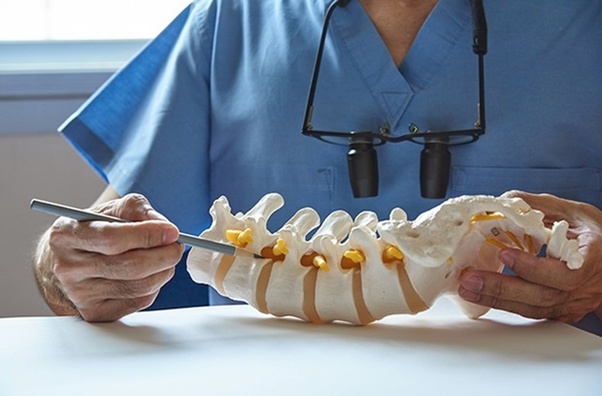Estimated reading time: 0 minutes
Do you have sciatica caused by a lumbar herniated disc and are contemplating surgery? It is never an easy decision to get surgery.
Nonsurgical options to sciatica treatment often begin with physical therapy, medications, therapeutic injections, and alternative therapies.
Based on medical data from surgical research on the overall success of sciatica operations, here are some useful tips.
Following a nonsurgical therapy attempt, surgery should be considered as a last resort.
While there are no exact guidelines for surgical indications in sciatica, the following factors may lead clinicians to recommend surgery to their patients:
When nonsurgical sciatica treatments such as oral medications, physical therapy, and epidural steroid injections have been ineffective for 6 to 8 weeks (or more).
When neurological symptoms such as numbness and/or weakness intensify or interfere with daily activities.
Surgery is usually advised when a medically treatable issue in the lower back, such as a herniated disc, spinal stenosis, or spondylolisthesis, is present. When sciatica is caused by a cyst, tumour, or spinal cord compression, surgery is far more likely to be recommended.
The instant pain relief and long-term prognosis may vary.
A few clinical investigations comparing surgical and nonsurgical sciatica treatments discovered that patients who had surgery had improved symptom relief and function. However, the outcomes of surgical and nonsurgical therapy are practically the same after 1 to 2 years and in general.
The surgical procedure as well as the underlying medical cause of sciatica have a major impact on the surgical outcome. In recent approaches, minimally invasive operations such as microdiscectomy for herniated discs and endoscopically guided laminectomies for spinal stenosis are performed. When compared to open operations, less invasive treatments frequently have shorter recovery times and fewer post-operative complications.
Although there are risks, sciatica surgery is relatively safe.
While sciatica surgery usually relieves pain in properly selected candidates, roughly 8% of those who have this surgery may need a second procedure within 2 years.
When sciatica surgery fails to provide relief, it is usually because of one or more of the following factors:
Error in primary diagnosis
Complications from surgery
Psychological considerations
The general health of the patient
Surgeon’s skill
A botched surgical outcome is also possible after a structural flaw has been fixed. For example, while the surgeon may have successfully repaired the herniated disc, the patient may still be enduring or worsening pain, indicating that the pain was not caused by the ruptured disc in the first place.
The decision to have sciatica surgery is a personal one. Reading and learning as much as you can about the many types of surgery and nonsurgical care available for your medical condition, as well as thoroughly researching a surgeon, will help you make the best decision for you and your circumstance.
The Benefits of Non-Surgical Ayurvedic Care for Slip Disc
The treatment restores harmony and balance to the spinal column.
Panchakarma is an incredibly beneficial treatment for nourishing the bones and tissues. It lowers inflammation and helps faster slip disc repair.
Unlike surgical methods, Ayurvedic medicine cleanses the body and restores its balance, encouraging prosperity and good health.
Panchakarma soothes both the mind and the body.
Our herbal medicines, in conjunction with yoga and Panchakarma, can help to strengthen the damaged area and avoid future trouble.
Panchakarma procedures are extremely efficient in treating rheumatism, sciatica, backaches, detoxification, and immune system repair.
Yoga is a powerful pain reliever. Ayurvedic treatment is a great alternative for prolapsed discs.
We treat the patient’s condition as well as the underlying cause of the problem.
Ayurvedic medicine can effectively heal a bulging disc. In contrast, surgical treatment does not guarantee that the spinal disc injury will not reoccur.
According to studies, people who chose non-surgical therapies experienced a lengthy procedure but received excellent results.
The majority of patients have relief from non-surgical slip disc treatment within one to two months.
Related-
Know more about Ayurvedic Spinal Disk & Radiculopathy Treatments.
GET IN TOUCH


Recent comments